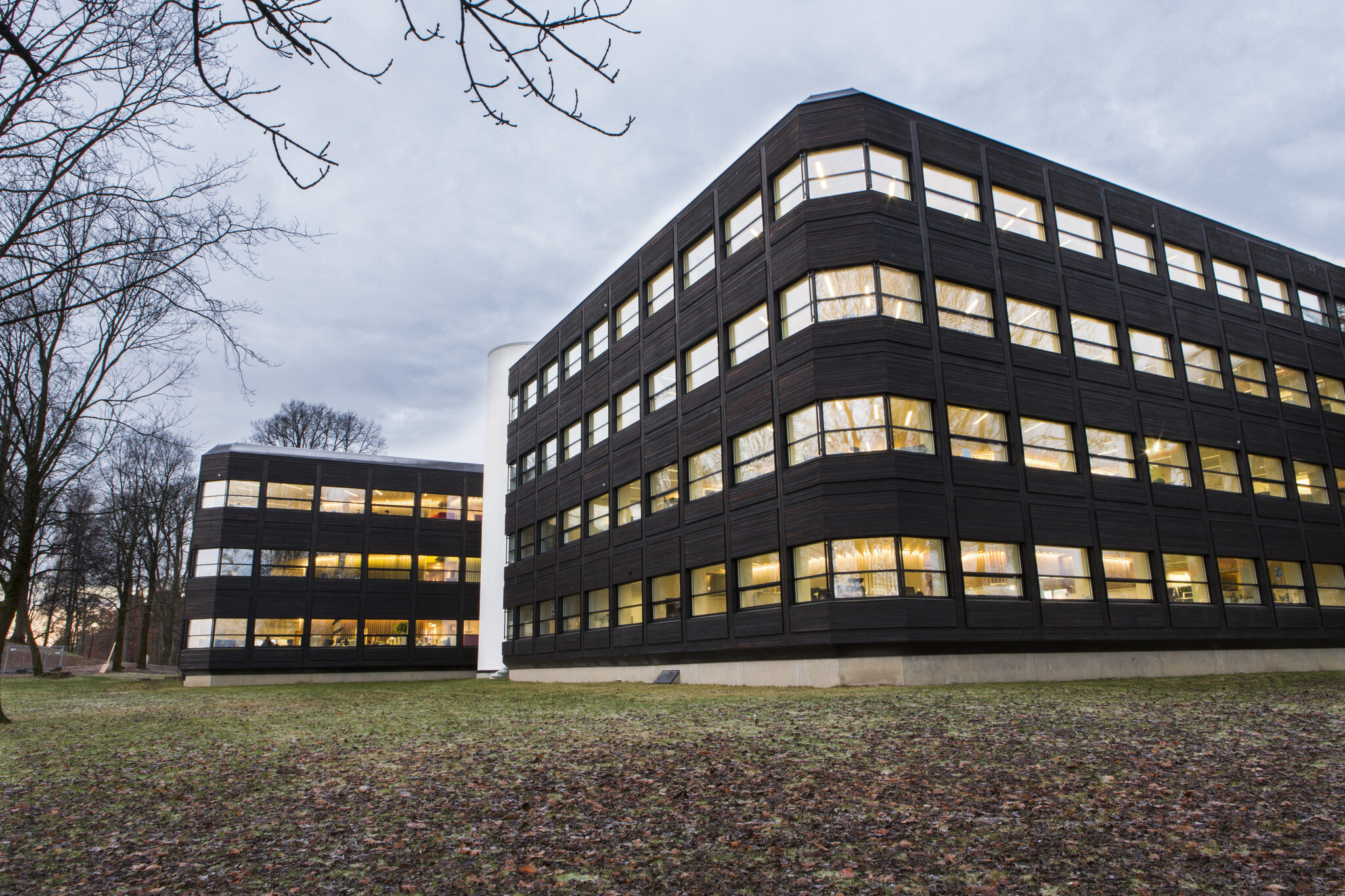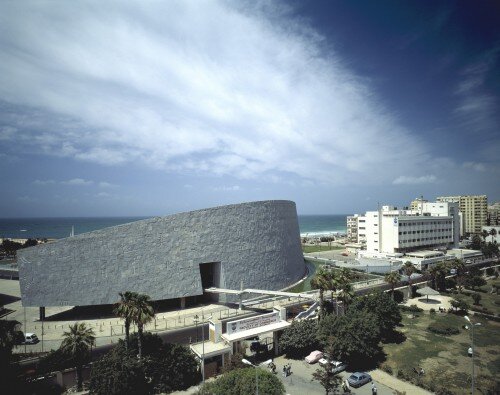Jenny Osuldsen, architect, partner, Snøhetta., photo: JO archive
Today we see a noticeable change in the climate not only with the environment, but the political climate too, as politicians increasingly aspire to an authoritarian style of politics. With these challenges it is time that architects and urban planners also question how we can respond to this and where we can contribute. We know we must act, but what does that mean for our profession? How should we work towards environmental and social sustainability?
During her visit to Prague we sat down for a quick coffee in a private architectural university ARCHIP and discussed these questions with Jenny B. Osuldsen, a super energetic and witty partner and director in the globally renowned architecture and design-studio, Snøhetta.
Interview: Milota Sidorova, Lucia Ďurčová, edits: Michael Higgs
With the climate crisis and rising oceans, have you somehow prepared for the possibility that your iconic Oslo Opera House could drown?
Yes, that was one of many discussions that we had during the design process. The site is located below sea level, so we had to make a watertight structure that can withstand external forces in a city which is prone to tough weather conditions. However, since the last Ice Age, Norway has continuously been rising, which means that the Opera should be safe, but for Oslo’s inner harbour, that may be a challenge. However, for all our projects, particularly in Norway, we need to consider heavy weather conditions and strong seasons, given the nature of the city.
Norwegian National Opera and Ballet, photo: Snøhetta
Do you mean the ground surface is rising...?
Yes, about five millimetres per year in Oslo, and varying in other places in Norway. If you sum up the annual rise minus the sea level rise right now, we are still rising 1.8mm per year.
Okay, but projections after the melting of the ice estimate ocean and sea levels to rise by up to 20 metres...
Of course, but in that case most of Oslo will already be underwater regardless and we have an enormous challenge – and I agree, we need to have more long-term planning!
In Snøhetta you promote transdisciplinarity in design. How do climate crisis scenarios influence your work in architecture and city planning? How do you envision cities adapting to the climate crisis?
As architects, we really must consider what we design, and how we build it. It is our task to consider the impact this has on the environment and implement this in our way of working when we design buildings, landscapes or work with city planning. For a long period of time, Snohetta has worked on smaller interventions, trying to adapt our design to new climate conditions. One of our most substantial projects is the Powerhouse projects which represent a collaboration in the development of energy-positive buildings. ZEB (The Research Centre on Zero Emission Buildings) has been an important research partner and they are part of Sintef, which is part of the Technical University in Trondheim. The Powerhouse collaboration aims for zero emission buildings and ZEN, which stands for zero emission neighbourhoods. This alliance of engineers, clients and builders has been ongoing for about ten years. The first project we did in this network was very technical and focused more on the technical details, rather than simply architecture. It was an old office building outside of Oslo, and because it was built in the 1980s, the facade is considered protected heritage, which meant we couldn’t do anything to it externally.
To us, this poses the question about how to utilise, reuse and delay water as a resource and for irrigation. Pipelines are old and outdated, too many creeks have been piped, and too many areas have hard surfaces. With sunlight we must ask ourselves – where can we collect solar energy and utilise it to create energy?
It was a typical outdated office building, which struggled with leakage and terrible ventilation. The new life span of the up-cycled building was designed for sixty years, and after carrying out the material and energy analysis we realized that there were no quick solutions to this building’s problems. The case for Powerhouse Kjørbo ended up being a complete rehabilitation of the first two office buildings, which resulted in Norway’s first energy-positive office building, and probably the first renovated energy-positive building in the world. Collaborating with the engineers, we scoped out the technical parameters and applied them in a new way.
The energy accounts include energy consumption related to the production of building materials, construction, operation and demolition of the building. We calculated the new incoming energy (solar and heat), built stairs where the ventilation was poor, exposed ceilings and eventually changed the exterior facades. We utilised the black glass from the exterior of the building to create some of the interior and we added a new layer of insulation.
Powerhouse Kjørbo. photo: Leikny Havik Skjaerseth
Climate in cities will change so much that in some places and cities, trees will no longer be able to live. My colleagues, landscape architects tell me newly planted trees will be able to survive for on average for 15 years in the conditions of Central European cities. To have trees with all the required maintenance will be a considerable investment. Some experts from the field that I have met told me the future of urban greenery for some cities will not lie in trees, but more resilient plants like vines and pumpkins.
That is pretty shocking...
That brings me back to cities like Bologna where a system of arcades is shading the city. Maybe the alternative to trees in extreme conditions is a combination of architecture and nature, such as lianas. Do you see some architectural adaptations for climate future in Norway?
The Norwegian climate has gotten warmer over the years, and we do notice climate change particularly with heavy rainfalls over shorter periods. To us, this poses the question about how to utilise, reuse and delay water as a resource and for irrigation. Pipelines are old and outdated, too many creeks have been piped, and too many areas have hard surfaces. With sunlight we must ask ourselves – where can we collect solar energy and utilise it to create energy? We are also making a conscious effort to recycle and reuse already existing materials on buildings, such as with the Powerhouse office buildings and we should ask ourselves more often, do we need to build something new, or can we reuse more? We should also consider degrowth. This reduces the energy consumption of producing new materials significantly, and we need to always keep this in mind during the design process – what can be reused, and how?
I live in a rooftop apartment, I can also feel the rough consequences of tropical days and nights. Do you think shading and cooling will become so important it will change the shapes of buildings?
I think so. Shapes of buildings will change as well as the internal organisation of a building and the way we live. We often refer to the term “Design follows environment”, which means that the look, form and shape of a building will be different to respond to the environment. Examples of this include when we use parameters to optimise the harvesting of solar energy which changes anything from angles, to accommodating for heat reduction by using light-coloured materials, installing green roofs to harvest and store rainwater, or the irrigation of plants to create better biodiversity. These measures will be much more noticeable in the new buildings and will be a sort of “style” that is based on functionality.
We should also consider degrowth. This reduces the energy consumption of producing new materials significantly, and we need to always keep this in mind during the design process – what can be reused, and how?
Where do you see priorities in urban planning?
In Oslo, we recently had a new female chief architect brought in at the top of the city municipality. She seems to be focusing on the environment and how architecture can play a part in the future planning of Oslo. One of the key issues that needs to be addressed is affordable housing as more young people are moving to the city, where housing is very expensive. I believe we need to rethink the system of urban planning - some call it ecology, we like to call it urban ecology. However, our politicians do implement changes which are very efficient and helpful too. One example is how politicians at a national level pushed for better, cleaner air and a reduction of fossil fuel cars. The Norwegian politicians answered this demand by decreasing taxes for those who choose to buy electric cars, increasing the incentive to drive more environmentally friendly vehicles. They also allowed these vehicles to drive in the taxi and bus lanes and to park for free, which has resulted in a massive increase in electric cars all over the country. Today, we have got cleaner air, less noise, free parking for non-electric cars removed and the bike lanes have been expanded significantly.
Snøhetta works also in the Middle East, in countries of authoritarian political regimes. Many architecture studios love to build in Middle East as money is good and there is no opposition. But as you said, we as architects take responsibility, let me ask you - considering climate change and social inequalities, do you – as a studio - try to raise awareness for your clients? Do you make moral statements?
We make architecture and design, not moral statements. We believe, as architects and designers, that we must have a responsibility to use architecture and design to bring the world forward towards a possibly better future. In our portfolio we have a variety of projects varying across commercial, cultural and sustainability projects. Many clients talk about sustainability, but when asked to describe what they really mean in terms of ambitions and consequences they might sometimes be reluctant to move forward with the project, as they are worried it might be too expensive.
However, with a changed perspective from short term to long-term, environmental focus and actions will pay off. After we won and built the library in Alexandria, we were invited to take part in more competitions in the Middle East region. In all our projects, we do believe that communication is imperative in understanding and learning from each other, overcoming challenges, creating and changing the future together, and we apply this mentality when working in the Middle East as well.
Bibliotheca Alexandrina, photo: Gerald Zugman
We believe in the power of culture and architecture to indirectly and directly influence changes in society, both touching on social and environmental sustainability
Thank you for the interview!
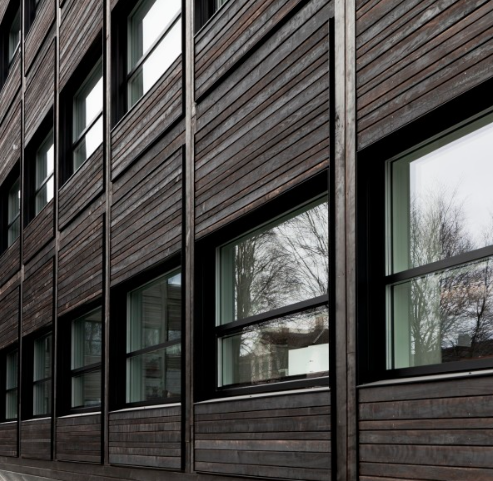
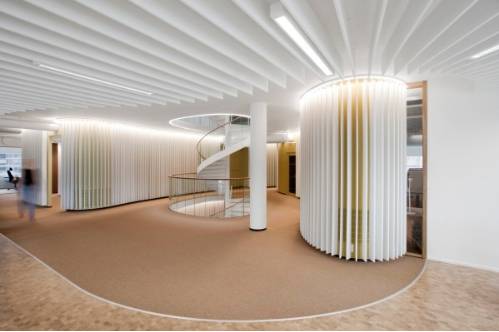
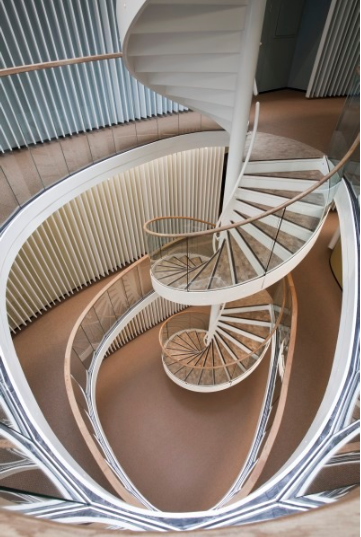
Jenny B. Osuldsen is a partner in Snøhetta and professor in landscape architecture. She educated as landscape architect in Norway and in the USA as well. She joined Snøhetta in 1995 and had a central position in developing the landscape architecture department.



